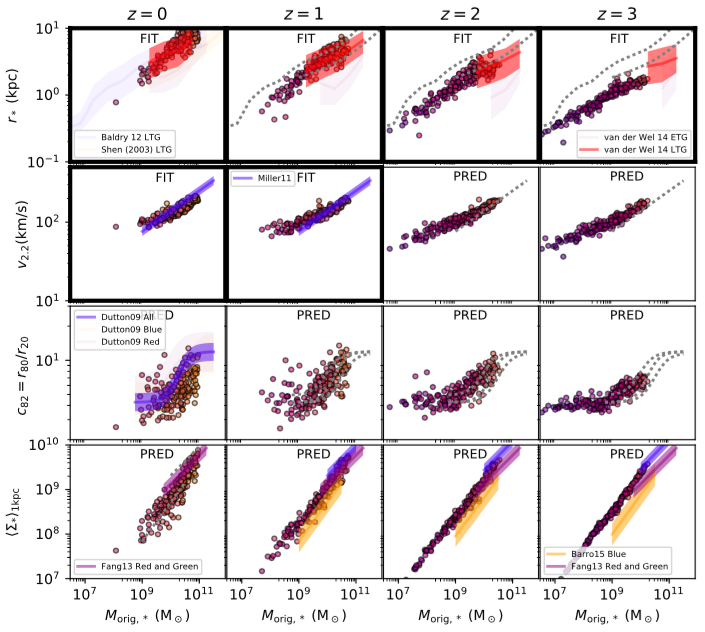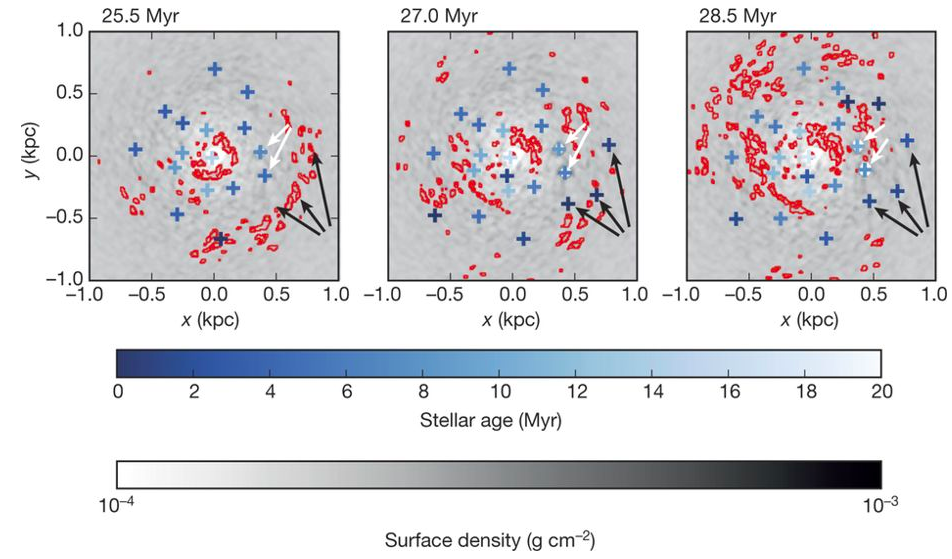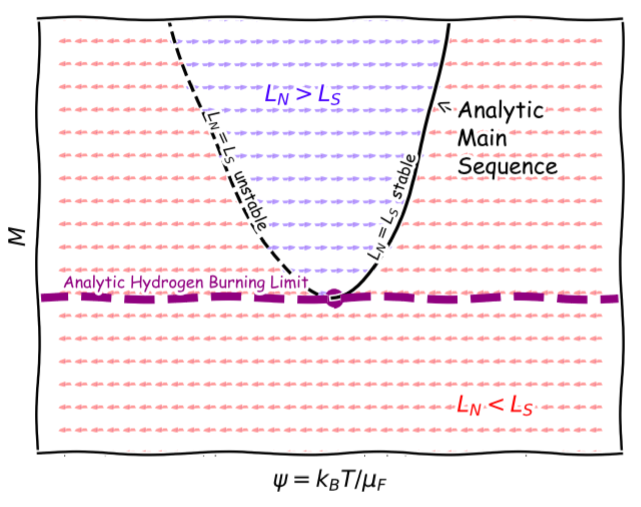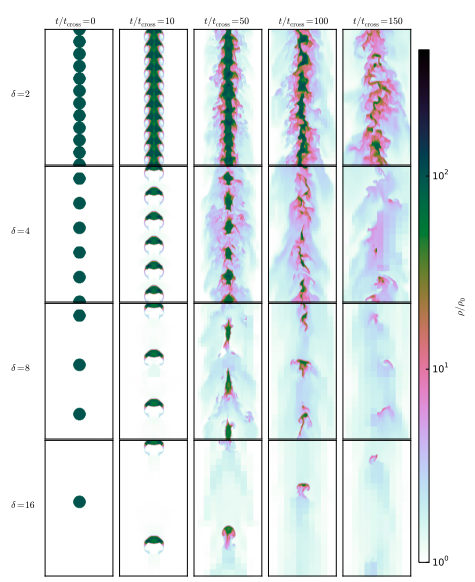star formation in dwarf galaxiesDwarf galaxies form stars slowly and in a far different environment than the more massive Milky Way-mass galaxies where much of our understanding about star formation and feedback arises. Dwarf galaxies also happen to be easier in some ways to simulate, precisely because the lower metallicity eases the resolution requirements on the cooling radius of supernova blast waves, and decreases the optical depth to FUV photons.
Our high-resolution numerical experiments explore the physics of star formation regulation in low-mass galaxies, where predictions of different models predict dramatically different outcomes. |
|
|

Figure 6 of Forbes (2015). These are the trajectories of spinning meter-sized objects, colored by the direction of their spin vector. If they can spin quickly enough, their lifetime in the disk can be altered by about a factor of 2 - not enough to qualitatively change the meter-size barrier, but a large enough effect to quantitatively change how the streaming instability acts to produce planetesimals.
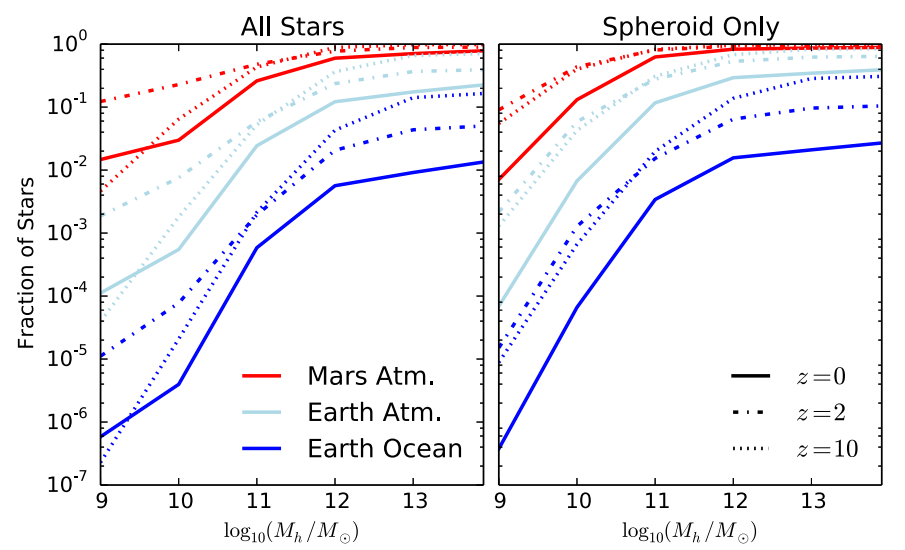
Figure 4 of Forbes & Loeb (2018a). The fraction of stars subject to different levels of mass loss as a function of the mass of the host galaxy. At z=0, most planets in galaxies like the Milky Way or more massive have lost a mass equivalent to Mars's atmosphere, and about 10% have lost a mass comparable to Earth's atmosphere. Some may even be transformed from sub-Neptunes to super-Earth's by this process (see Chen, Forbes, & Loeb (2018))
|
Problems for planetsPlanets are everywhere, but we're not sure how they form. Dust particles amalgamating to form larger objects run into trouble when they approach about a meter in size - collisions between meter-sized objects tend to erode the rocks rather than building them up, and on top of that drag from the gas in the protoplanetary disk causes them to spiral into the star quite quickly - in a few hundred years. A promising candidate to avoid this problem is to have smaller particles act collectively in the streaming instability to directly collapse from dust into ~10 km planetesimals. I was curious how the Magnus force (or the lift force) that arises for spinning objects would affect this picture. It turns out that in the right circumstances, the lift force can be about as strong as the drag force (just in a perpendicular direction), and can disrupt the streaming instability as it tries to form planetesimals. In addition to potentially causing problems for planet formation theories, my collaborators and I have looked into how planetary atmospheres may be affected by the supermassive black holes at the centers of galaxies. It turns out that atmospheres are sufficiently fragile, and black holes can be sufficiently bright, that a large fraction of the planets in the universe have likely sustained some damage from black holes. |
Bacterial PredationThis isn't astrophysics, but you might be surprised how similar the dynamics of dust grains in protoplanetary disks and bacteria in a dish are.
What happens when a bacteria hunter is introduced into a population of prey bacteria? If one set of prey can swim and the other can't, you would expect the motile bacteria to run into their predators more frequently (as is happening in the animation on the right). But it turns out that in the real world when you run this experiment for Bdellovibrio bacteriovorus (the hunters, a "natural anti-biotic") and two sets of Vibrio cholerae, one of which has been genetically modified to not be able to swim, the immotile bacteria are rapidly killed off. Running some experiments (don't worry - I was nowhere near the lab!) with different fluid viscosities points to the fact that the greater the drag force on Bdello as it attempts to kill Vibrio, the harder it is for Bdello to kill its prey. |
